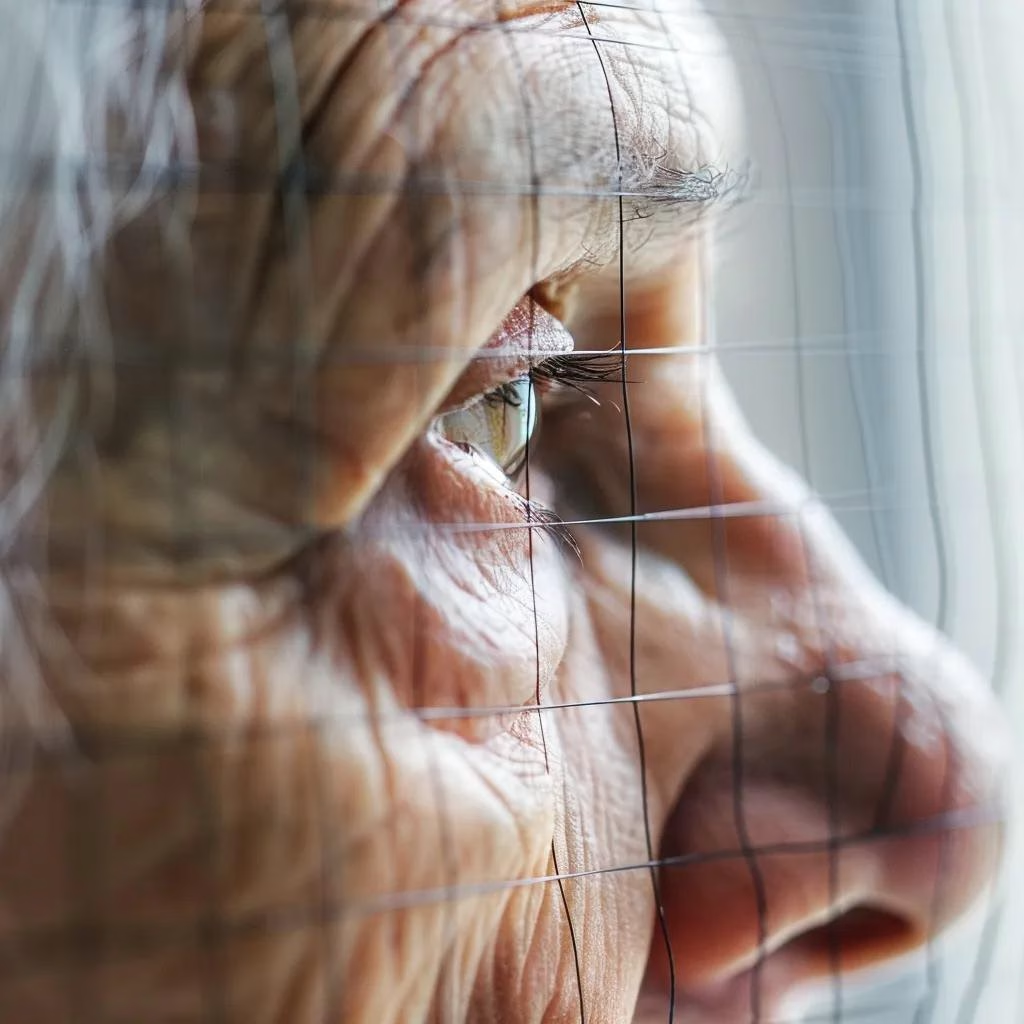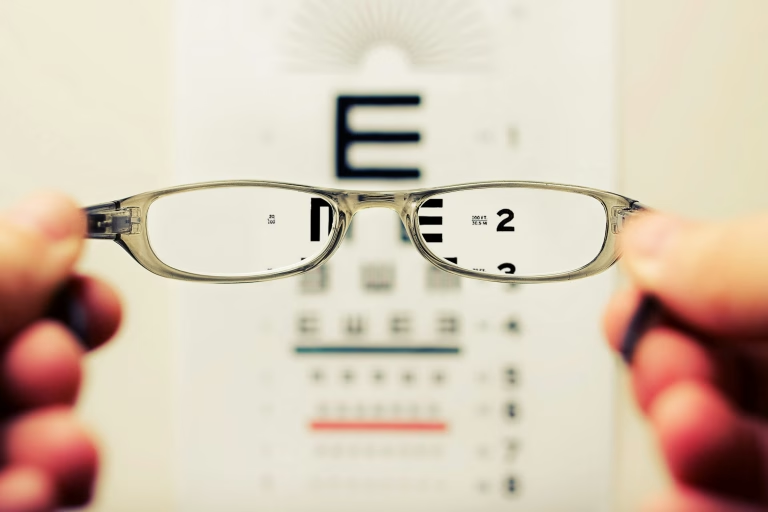What Is Macular Degeneration? Understanding Causes, Symptoms, and Treatment Options
Central vision loss affects nearly 20 million adults in the U.S., making macular degeneration a leading cause of visual impairment. In this article, you’ll discover how macular degeneration develops, the role of the macula in sharp vision, and how early detection and treatment preserve sight. We’ll define dry and wet forms, outline common symptoms, explore age-related and lifestyle risk factors, explain diagnostic tests like OCT and the Amsler grid, review therapies from AREDS2 supplements to anti-VEGF injections, and offer strategies for living well and preventing further progression. Advanced Eye Care Center provides expert diagnosis and personalized treatment plans. Schedule an eye exam to protect your central vision and maintain lifelong eye health Macular Degeneration: Advanced Eye Care in Denton.
What Is Macular Degeneration and How Does It Affect Vision?
Macular degeneration is a medical condition in which progressive damage to the macula—a small region in the retina responsible for detailed central vision—impairs tasks like reading, driving, and recognizing faces. As drusen deposits accumulate or abnormal blood vessels leak under the retina, central visual acuity declines, but peripheral vision remains intact. Early identification and intervention can slow progression and help patients maintain independence, underscoring the importance of routine screenings at specialized practices such as Advanced Eye.
What Is the Macula and Its Role in Central Vision?
The macula is an anatomical structure located at the center of the retina that provides high-resolution, color vision for activities requiring fine detail. It contains densely packed photoreceptors—cones—that convert light into neural signals, enabling reading, facial recognition, and color discrimination. Because the macula constitutes less than 2% of the retinal surface but handles over half of visual processing, its health is crucial for daily tasks and quality of life.
The Role of the Macula in Vision
The macula, a small area in the retina, is crucial for detailed central vision, enabling tasks like reading and recognizing faces. It contains densely packed photoreceptors, particularly cones, which convert light into neural signals, facilitating high-resolution vision and color discrimination. The macula’s health is essential for daily activities and overall quality of life.
National Eye Institute, Facts About Age-Related Macular Degeneration (2023)
This research highlights the importance of the macula’s function in central vision, which is directly relevant to understanding how macular degeneration affects sight.
Understanding its function sets the stage for grasping how macular degeneration disrupts central vision.
How Does Macular Degeneration Damage the Macula and Retina?
Macular degeneration damages retinal tissues through two primary mechanisms: drusen accumulation in dry AMD and choroidal neovascularization in wet AMD. In dry AMD, yellowish drusen—lipid-rich protein deposits—form between the retinal pigment epithelium and Bruch’s membrane, causing gradual photoreceptor death. In wet AMD, new blood vessels grow beneath the retina, leaking fluid and blood that rapidly distort and scar the macula. These processes sever the link between light detection and visual processing, leading to blurred or darkened central vision and potential permanent central blind spots.
What Are the Different Types of Macular Degeneration?
Macular degeneration occurs in two main types—dry and wet—each with distinct characteristics, progression rates, and treatment approaches. Clinicians classify cases to guide interventions and set realistic expectations for visual outcomes.
| Type | Characteristic | Mechanism |
|---|---|---|
| Dry Macular Degeneration | Drusen formation | Protein and lipid deposits under the retina |
| Wet Macular Degeneration | Neovascular leakage | Abnormal choroidal blood vessel growth and leakage |
These distinctions explain disease progression: dry AMD advances slowly through drusen enlargement and atrophy, while wet AMD can cause rapid central vision loss due to vessel leakage and scarring.
What Is Dry Macular Degeneration and Its Characteristics?
Dry macular degeneration accounts for 80 – 90 percent of AMD cases and is characterized by small to large drusen in the macula, retinal pigment changes, and geographic atrophy over time. Patients may experience gradual blurring or gray patches in central vision but often remain asymptomatic in early stages. Nutritional supplements following AREDS2 guidelines can help slow progression, and low-vision aids enable individuals to maintain daily activities despite central vision deficits.
What Is Wet Macular Degeneration and How Is It Different?
Wet macular degeneration comprises roughly 10 percent of AMD cases but drives 90 percent of severe vision loss. Unlike dry AMD, wet AMD features choroidal neovascularization—new, fragile blood vessels under the retina that leak fluid or blood, causing rapid distortion (metamorphopsia) and central dark spots (scotomas). Anti-VEGF injections are the primary treatment to block vessel growth and reduce leakage, stabilizing or improving vision for most patients.
What Are the Common Symptoms and Early Signs of Macular Degeneration?

Early signs of macular degeneration often manifest subtly, so self-monitoring and routine eye exams are essential for timely diagnosis and intervention.
How Does Blurred Central Vision Indicate Macular Degeneration?
Blurred central vision is the hallmark symptom of AMD, presenting as a gradual or sudden inability to see fine details directly ahead. When photoreceptors in the macula deteriorate, letters on a page lose sharpness, and faces appear out of focus. Recognizing this change early can prompt prompt referrals to an ophthalmologist and initiation of therapies that preserve remaining macular function.
What Does Distorted or Wavy Vision Mean?
Distorted or wavy lines—metamorphopsia—signal irregular retinal surface architecture often due to fluid leakage in wet AMD. Patients describe straight edges bending or appearing wavy, which can be objectively detected with an Amsler grid. Early detection of metamorphopsia guides urgent evaluation for possible anti-VEGF therapy before irreversible scarring occurs.
How Can Difficulty Seeing in Low Light Signal AMD?
Difficulty adapting to dim lighting or noticing dimming of objects in low-light settings arises from compromised macular photoreceptors. Early AMD may spare broad daylight vision while impairing vision under reduced illumination. Patients reporting prolonged dark adaptation should undergo comprehensive macular evaluation to detect subtle atrophic changes before central vision loss deepens.
How Is the Amsler Grid Test Used to Detect Symptoms?
The Amsler grid test is a simple, at-home screening tool consisting of a square grid with a central fixation dot. By covering one eye and focusing on the dot, patients observe whether grid lines appear wavy, broken, or missing. Regular monthly use helps track metamorphopsia and scotomas, prompting timely scheduling of an eye exam at Advanced Eye when any distortion is noted.
What Causes Macular Degeneration and Who Is at Risk?
Macular degeneration arises from a combination of non-modifiable and modifiable risk factors that interact over a lifetime to damage the macula’s delicate structures.
How Does Age Increase the Risk of Macular Degeneration?
Age is the strongest risk factor for AMD, with prevalence rising sharply after age 60 due to cumulative oxidative stress, reduced retinal pigmentation, and decline in cellular repair mechanisms. By age 80, nearly 30 percent of adults show signs of early AMD. Understanding age-related vulnerability underscores the importance of regular macular screenings in senior care.
What Genetic and Family History Factors Contribute to AMD?
Genetic predisposition plays a key role in AMD, with variants in complement factor H (CFH) and ARMS2 genes doubling to tripling risk for advanced disease. Individuals with first-degree relatives affected by AMD face higher lifetime risk, and genetic testing may guide personalized monitoring and preventive strategies.
How Do Lifestyle Factors Like Smoking and Diet Affect AMD Risk?
Lifestyle modifications significantly influence AMD progression. Smoking increases oxidative damage and inflammation, doubling AMD risk and accelerating progression. Diets rich in leafy greens, omega-3 fatty acids, and antioxidants correlate with a 25 – 30 percent reduction in AMD incidence. Adopting a Mediterranean-style diet and quitting smoking can markedly lower future macular damage.
Risk Factors and Lifestyle Modifications for AMD
Age is the strongest risk factor for AMD, with prevalence increasing sharply after age 60. Lifestyle modifications, such as quitting smoking and adopting a diet rich in leafy greens and omega-3 fatty acids, can significantly influence AMD progression. These changes can reduce the risk of further macular damage.
American Academy of Ophthalmology, Age-Related Macular Degeneration (2024)
This source provides information on the risk factors and lifestyle changes that can impact the progression of AMD, which is directly related to the article’s discussion of causes and prevention.
What Other Medical Conditions Increase AMD Risk?
Systemic conditions such as hypertension, cardiovascular disease, and obesity contribute to AMD by promoting vascular dysfunction and chronic inflammation in the choroid and retina. Effective management of blood pressure and cholesterol, along with weight control, supports macular health and complements ophthalmic interventions.
How Is Macular Degeneration Diagnosed by Eye Doctors?
Ophthalmologists use a series of clinical evaluations and imaging tests to confirm AMD, assess severity, and tailor treatment plans.
What Happens During a Comprehensive Eye Exam for AMD?
A comprehensive eye exam for AMD begins with pupil dilation followed by slit-lamp biomicroscopy and fundus examination. The clinician inspects the macula for drusen, pigmentary changes, and atrophic areas. Visual acuity tests measure central vision loss, while an Amsler grid check assesses metamorphopsia. This multi-step evaluation defines disease stage and guides further imaging.
How Are Optical Coherence Tomography (OCT) and Fluorescein Angiography Used?
Optical coherence tomography (OCT) generates cross-sectional images of retinal layers to measure macular thickness and detect fluid accumulation. Fluorescein angiography involves intravenous dye that highlights blood flow through retinal and choroidal vessels, revealing leakage or neovascular networks characteristic of wet AMD. These advanced tests pinpoint pathology and monitor treatment response.
When Should You See an Ophthalmologist for Macular Degeneration?
Patients experiencing any new central vision changes—such as blurriness, distortion, or dark spots—should see an ophthalmologist promptly. Individuals over age 60 or with family history of AMD benefit from annual macular screenings even in the absence of symptoms. Early referral ensures timely initiation of interventions that slow disease progression.
What Are the Treatment Options for Macular Degeneration?

Treatment strategies for AMD vary by type and severity, combining medical therapies, nutritional support, and visual rehabilitation to preserve quality of life.
How Do Anti-VEGF Injections Treat Wet Macular Degeneration?
Anti-VEGF injections block vascular endothelial growth factor, preventing new blood vessel formation and reducing leakage in wet AMD. Monthly or bimonthly injections of ranibizumab, aflibercept, or off-label bevacizumab stabilize or improve vision in up to 90 percent of patients. This targeted therapy halts scarring and preserves central acuity when administered promptly.
What Role Do Nutritional Supplements Like AREDS2 Play in Dry AMD?
AREDS2 supplements combine antioxidants (vitamins C and E), zinc, copper, lutein, and zeaxanthin to slow progression of intermediate and advanced dry AMD. Clinical trials demonstrate a 25 percent reduction in the risk of vision-threatening progression over five years. Integrating these supplements into dietary regimens supports macular pigment density and counters oxidative stress.
What Emerging Treatments Are Available for Macular Degeneration?
Emerging therapies for AMD include gene therapies that deliver anti-VEGF agents via viral vectors to reduce injection frequency, complement inhibitors targeting immune pathways in geographic atrophy, and photobiomodulation using low-level light to stimulate cellular repair. Clinical trials are underway to expand options for patients unresponsive to standard care.
How Can Low Vision Aids Help Patients Live with AMD?
Low vision aids—such as magnifiers, telescopic glasses, and electronic reading devices—enhance residual vision and support independence. Occupational therapists train patients in device use and adaptive strategies, enabling reading, writing, and daily living tasks despite central field loss. Combining visual rehabilitation with medical therapies maximizes functional outcomes.
Explore Related Eye Health Articles & Resources
While AMD can lead to permanent central vision loss, patients can maintain quality of life through adaptive strategies, ongoing care, and support resources.
What Is the Expected Progression of Dry vs. Wet AMD?
Dry AMD typically advances gradually over years from drusen accumulation to geographic atrophy, causing slow central vision decline. In contrast, wet AMD can cause abrupt vision loss within weeks due to fluid leakage and scarring. With prompt anti-VEGF therapy, most wet AMD cases achieve vision stabilization, whereas dry AMD management focuses on nutritional support and monitoring.
How Can Patients Cope with Vision Loss and Maintain Quality of Life?
Patients cope with AMD by adopting magnification devices, optimizing home lighting, labeling household items in large print, and using voice-activated technology. Vision rehabilitation programs teach scanning techniques and contrast enhancement to maximize remaining vision. Supportive counseling addresses emotional adjustment and fosters resilience in daily living.
What Support Resources Are Available for AMD Patients?
Numerous organizations offer education, peer support, and rehabilitation services for AMD patients:
- The Macular Society provides local support groups and online forums.
- The American Foundation for the Blind offers device training and resources.
- Advanced Eye’s vision rehabilitation specialists tailor in-office sessions and connect patients to community programs.
How Can You Prevent Macular Degeneration and Maintain Eye Health?
Preventing AMD involves lifestyle modifications, nutritional optimization, and regular ophthalmic evaluations to detect changes early.
What Lifestyle Changes Reduce the Risk of AMD?
Adopting healthy habits lowers AMD risk substantially:
- Quit Smoking – Eliminates a major oxidative stressor in retinal tissues.
- Balanced Diet – Increases intake of leafy greens, fish rich in omega-3s, and colorful fruits to supply antioxidants.
- Regular Exercise – Enhances ocular blood flow and supports cardiovascular health.
These changes not only protect the macula but also improve overall well-being.
Why Are Regular Eye Exams Crucial for Early Detection?
Routine dilated eye exams enable ophthalmologists to detect drusen, pigment changes, and early neovascular signs before visual symptoms appear. Annual screenings for individuals over 60 or those with a family history of AMD facilitate early intervention with AREDS2 supplements or anti-VEGF therapy, maximizing the chance of preserving central vision.
How Does Nutrition Support Macular and Retinal Health?
Nutrition supports retinal health by supplying antioxidants, carotenoids, and omega-3 fatty acids that protect photoreceptors from oxidative damage and inflammation. Key nutrients include:
- Lutein & Zeaxanthin – Concentrate in the macula to filter blue light.
- Omega-3 Fatty Acids – Maintain retinal cell membrane integrity.
- Vitamin C & E, Zinc, Copper – Promote antioxidant defense and cellular repair.
Incorporating these nutrients through diet or AREDS2 supplements strengthens macular resilience against age-related changes.
Scheduling regular check-ups and adopting preventive measures empowers you to safeguard your central vision and enjoy lasting eye health.
Monitoring changes in central vision early, adopting targeted treatments, and making proactive lifestyle adjustments form a comprehensive approach to macular degeneration care. Advanced Eye’s retina specialists use state-of-the-art imaging and personalized therapy plans to detect AMD at its earliest stages and implement solutions that preserve sight. If you notice any new blurring, distortion, or difficulty in low light, schedule an eye exam at Advanced Eye today to protect your vision and maintain your independence.







